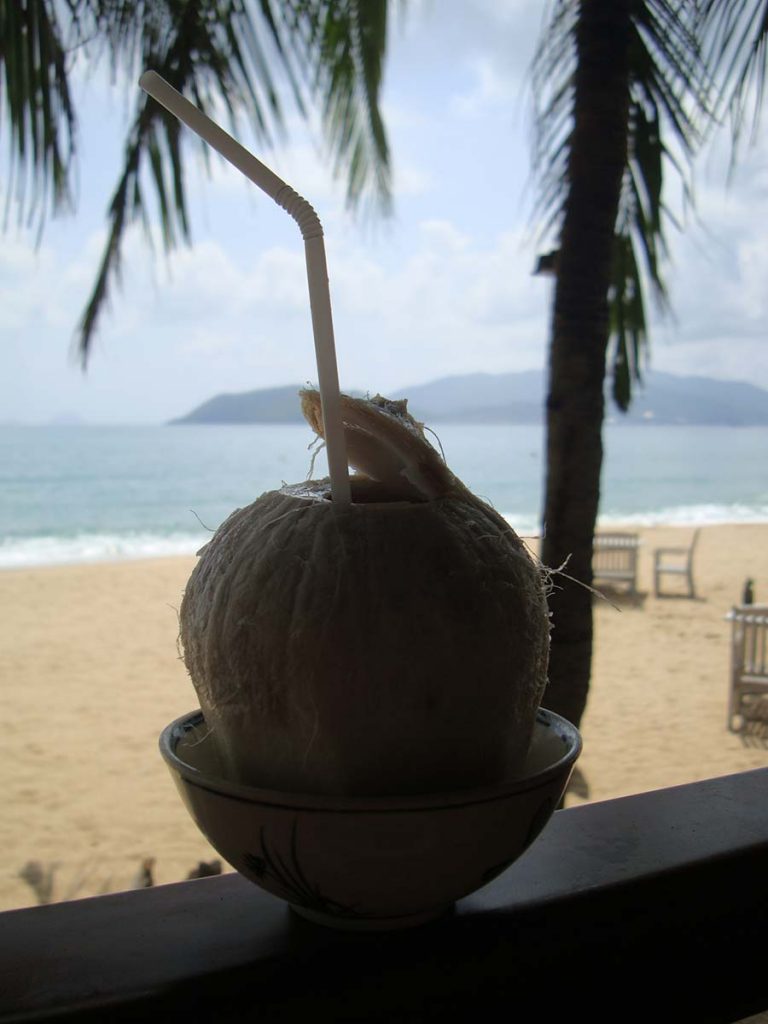First published on the Spectator’s website
We emerged from our deceptively named ‘sleeper’ train to the hot fug of Nha Trang and the imitable stench of dried squid. It was early morning, but vendors lined the station’s platforms, proudly gesturing toward the fetid, dehydrated cephalopods which had about as much chance of getting near my mouth as the elixir of eternal youth. After a night during which my nostrils were corrupted by the gamey whiff of well-trodden sandals (courtesy of the German lady in the bunk above me) and I was jolted about by the jumble of Vietnam’s coastal train-tracks, the fishy reek was rather more than I could stomach.
So it was with pleasure that we left behind the Hogarthian hubbub of the station and bundled into the leather upholstered, air-conditioned people wagon (well it would be, woudn’t it?) which had been sent from our hotel. We watched Nha Trang unfold before our eyes as a rather gaudy seaside resort town (picture South East Asia’s answer to Scarborough) which just about manages to stay the fun side of trashy. Though situated on Nha Trang’s main strip Tran Phu, the Evason Ana Mandara is a welcome piece of serenity – with its lush, coconut-laden palms, blossoming bushes, and villa rooms that lead straight out onto the pearly white private beach.
The resort’s head chef Jeevan Thomas was there to welcome us at the door with jasmine-scented moist towels, (he couldn’t possibly have known how perfect a reception this was) and we were shown through to one of the nicest hotel breakfasts I’ve ever had. Sitting on the decking overlooking the tumbling blue waters and the mountainous coves that rise beyond them, we ate plates of sweet pineapple, passion fruit and pomelo (a sour sort of Vietnamese grapefruit), followed by pancakes with crumbling crispy bacon and saucers of Champagne. We finished the only way any self-respecting visitor to Vietnam can – with long, cool glasses of the strong, buttery, vanilla-scented iced coffee unique to this country, and then made an executive decision to jump into the sea.
Later, once I’d washed the salt out of my ears, I chatted with the hotel’s food and beverage manager Isaline Goy – a gamine French lady with a good, sound knowledge of Vietnamese cuisine, who talked to me about exactly why Vietnamese coffee tastes so special. “In Vietnam they only grow Robusta coffee,” she said. “It’s a very strong, fairly low grade sort of coffee, and it’s not very refined.” So how come it tastes so delicious? The secret is in the blending and roasting process, apparently. Goy told me that the coffee producers blend the coffee with Aratica – a slightly superior blend, but they also use other aromas and subtleties, roasting the beans with flavouring agents like butter, popcorn and… wait for it… diamonds – because they believe it enhances and smoothes out the flavour. Now, I’ve never tasted diamonds (hell, I haven’t even worn the things) – so I can’t guarantee that that’s what gives the coffee that extra special flavour – but it certainly can’t hurt.



